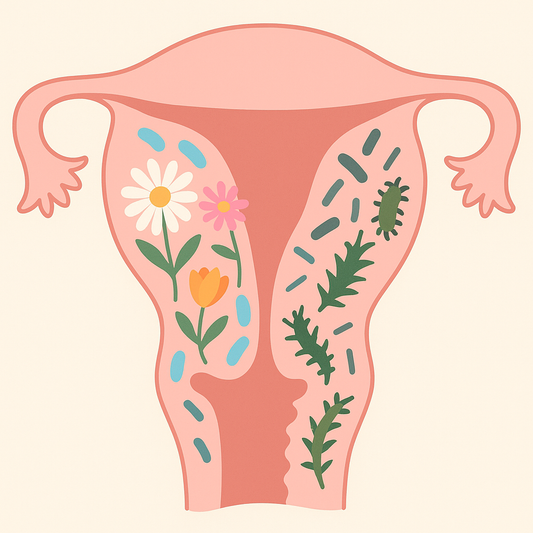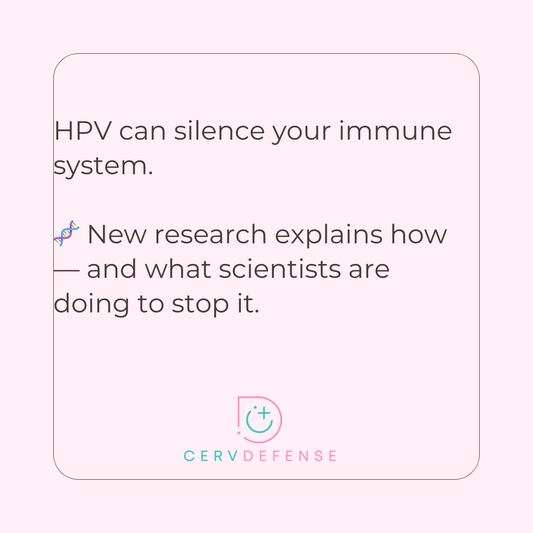
What’s Happening In the Cervix: How Local Inflammation and Microbiota May Fuel Cancer Risk
Share
We often talk about whole-body wellness and how systems like the gut, immune function, and stress resilience affect cervical health. But what if we told you that what’s happening locally in the cervix—right at the site of abnormal cells—could be just as important?
A recent peer-reviewed study published in the International Journal of General Medicine explored this very question. Researchers analyzed how inflammation, immune response, and microbial imbalance in the tumor microenvironment (TME) of the cervix may drive the progression from HPV infection to cervical dysplasia to cancer.
The takeaway? The cervix isn’t just passively responding to outside influences—its local environment may be actively shaping disease outcomes.
💡 What is the Cervical Tumor Microenvironment?
The tumor microenvironment refers to the complex mix of cells, immune signals, and bacteria in and around abnormal cervical tissue. When dysplasia (abnormal cells) is present, this environment becomes more inflamed, often characterized by immune dysfunction and microbiota imbalances.
Instead of helping the body clear HPV, this inflammatory state can suppress immune surveillance, allowing dysplasia to persist or progress.
🧬 Cervical Microbiota: Not Just the Gut
We’ve talked before about the gut–cervix axis. But this study emphasized the cervical microbiome—the bacteria and microbes living in the cervix and vaginal canal. When this ecosystem becomes imbalanced (a condition known as dysbiosis), it can trigger inflammation and weaken local immune defenses.
🔥 Chronic Inflammation = A Risk Factor
The study also highlighted how chronic, unresolved inflammation plays a central role in the cervical TME. This type of inflammation:
-
Inhibits immune cells that normally destroy infected or abnormal cells
-
Promotes the growth of blood vessels that feed tumors
-
Creates oxidative stress that can lead to DNA damage
In other words, inflammation isn't just a symptom—it can become a driver of disease.
🌿 What Can You Do?
While more research is needed, this study reinforces the idea that supporting your immune system and microbiota may help create a cervical environment where abnormal cells are less likely to thrive.
Some ways to do that:
-
Focus on whole-foods nutrition and limit inflammatory triggers (like sugar, alcohol, and processed foods)
-
Manage stress with mindfulness, yoga, or Qi Gong
-
Consider probiotics or fermented foods to support microbiota balance
-
Get regular movement to support circulation and lymphatic health
And yes, CervDefense was designed with this in mind—with ingredients chosen to support healthy inflammation levels, immune system resilience, and cervical cell integrity.
✨ The Bottom Line
Cervical health is about more than just screening—it’s about creating the right internal environment. Thanks to emerging science like this, we now understand that what happens in the cervix matters just as much as what happens systemically.
It’s your body, your cervix, and your healing journey. Let’s make sure you’re supported on every level.



